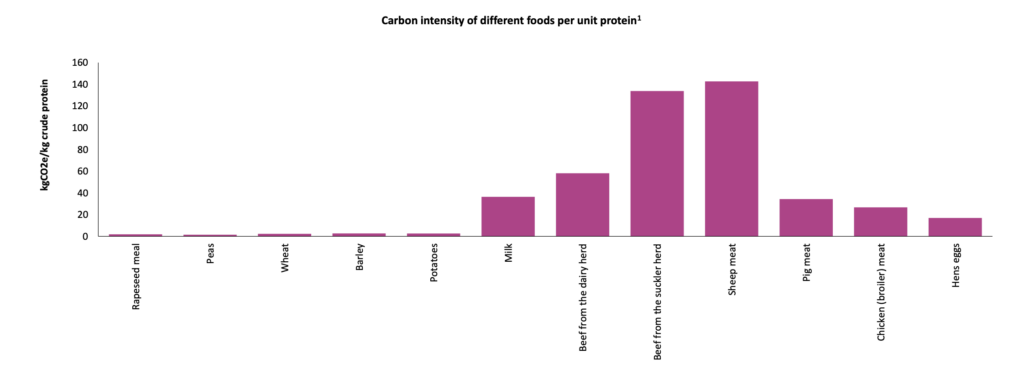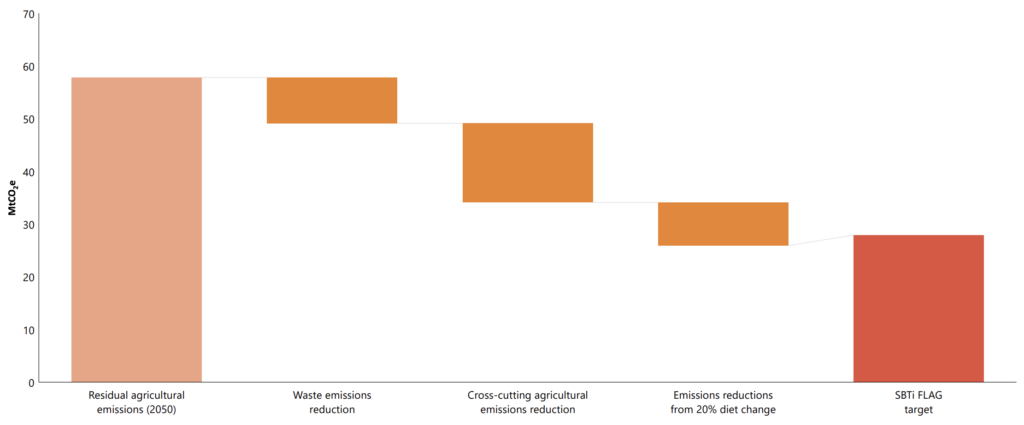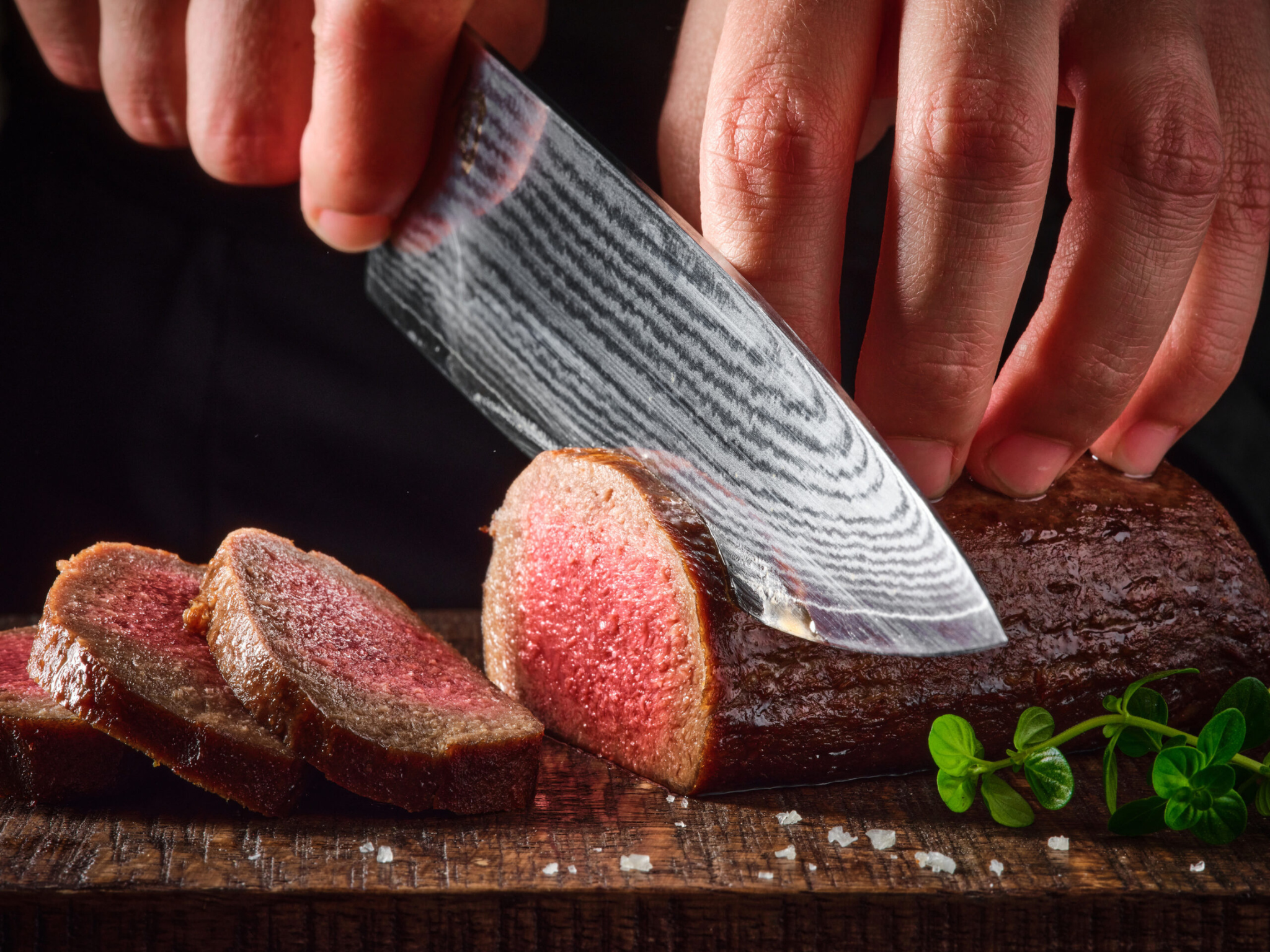UK Food Industry Leaders Draw Up Plan Suggesting a 20% Reduction in Meat & Dairy Consumption Needed to Achieve Net Zero
6 Mins Read
Reaching the UK food system’s climate goals isn’t possible without a reduction in red meat and dairy consumption, industry leaders say in a new report.
Food sector leaders in the UK have come together to produce a net-zero transition plan for the UK food system, highlighting the need for a 20% reduction in meat consumption by 2050 in order to achieve said goals.
The report was published by the Institute of Grocery Distribution (IGD) and the Waste and Resources Action Programme (WRAP), in collaboration with accounting firm EY, and is based on talks with industry executives from across the UK food supply chain.
The authors note that achieving the UK’s net-zero target for 2050 would be “extremely stretching” without immediate action on diets. “The food industry should work urgently to develop an approach to diet that balances net zero and health objectives; the absence of a position stands in the way of progress and leaves the industry vulnerable to having policies imposed upon it,” they write.
Transformation is required on the demand side too, including high uptake of low-carbon agriculture, effective regulation and processes to eliminate deforestation, major infrastructure provision for green energy and zero-emission logistics, and advancements in recycling, reuse and alternative materials.
But change on the supply side is critical too, which involves significant reductions in household food waste and dietary shifts towards low-carbon alternatives and the national Eatwell Guide. The report suggests that “without diet change, the food system would not be able to make its contribution” to meet climate goals certified by the Science-Based Targets initiative (SBTi).
The report doesn’t propose a roadmap or target for delivering the emissions reduction potential of Brits shifting towards low-GHG dietary choices, but IGD and WRAP have agreed to draw up specific plans to help the industry commit to the protein transition.
Swapping meat for pulses most optimal for emissions cuts

The publication was first announced in July, with the aim to create an evidence base to show what it would take for each agrifood industry segment to reach net zero, and serve as a useful framework for sector planning.
It notes how the food system accounts for 30% of territorial emissions in the UK, which is dominated by agriculture and land use change. Within this, meat (particularly red meats like beef and lamb) and dairy are much more carbon-intensive than plant proteins.
This is why the UK’s Climate Change Committee (CCC) has outlined several goals to reduce their intake in alignment with the net-zero strategy. It involves cutting red meat and dairy consumption by 20% by 2030 and 35% by 2050. But last month, it sent a letter to Ed Miliband, the energy secretary, calling for a 50% reduction by 2050 while replacing them with plant-based alternatives.
IDG and WRAP’s report falls short of this target and hasn’t set out a clear timeframe. It suggests a 20% cut in red meat and dairy by 2050, which would lower emissions by 9%, to achieve the stated net zero goals. The report specifies that this can only be achieved if the animal proteins are replaced with protein from pulses, as substituting them with chicken, fish or pork wouldn’t bring such emissions savings.
“A modest change in diet could be sufficient to meet targets, depending on emissions reductions in agriculture and food waste, but greater dietary shifts can support deeper cuts in carbon emissions,” the report suggests.
“Interventions to support dietary shift will need to be appropriately targeted to ensure the achievement of desired health outcomes. Greater alignment with the Eatwell Guide at a population level would be an appropriate direction of travel,” it adds.
“The key challenge to address is that the industry, working with government, should agree a position on diet change which balances net zero and health outcomes, fully accounting for impacts on nutrition.”
Catherine David, director of behavioural change and business programmes at WRAP, said: “We believe urgent action is needed by industry and government to establish a pathway for diets, with clear targets for 2030 that are rooted in the best current evidence and a range of expert perspectives, including from a nutrition and nature viewpoint.”
Dietary change is necessary to lower food’s carbon footprint

WRAP is perhaps best known for its work on food waste reduction. It notes that the UK wastes a quarter of all food purchased, and 60% of the associated emissions are generated at the household level. WRAP’s flagship initiative, the Courtauld Commitment, aims to halve food waste by 2030 (from a 2015 benchmark) – but this would still mean 12.5% of food bought by Brits ends up in the bin.
This is why the report goes a step further, modelling a scenario where food demand decreases by 15% in 2050 compared to 2021, leaving waste at very low levels. This would reduce forest, land and agriculture (FLAG) by a further 10%.
But without dietary change, these cuts in food waste won’t be enough. If food waste is cut down to these levels in combination with a “high ambition” scenario for agriculture, it would create a gulf of 20 million tonnes of CO2e to achieve the SBTi’s FLAG targets in line with a 1.5°C limit.
Combining these with “less mature or more challenging approaches” like low-carbon feed and intercropping, however, would leave a gap that can be more than filled by a 20% cut in red meat and dairy consumption. Meanwhile, halving meat and dairy intakes and reaching very low levels of food waste would close this gap too.
Any diet change needs to maintain or improve nutritional balance, affordability, and accessibility. The Eatwell Guide incorporates all these factors in its dietary recommendations, which involve more diverse proteins to help supply chain resilience and a nutrient-dense diet, a switch towards sales of healthier and more sustainable products, and a greater proportion of sales of plant-rich sources.
“At WRAP, we do not shy away from challenging issues and for the food sector, no issue is more charged than diet change,” said David, acknowledging that the report sets a more conservative target than the CCC. “WRAP has published a 2030 pathway for delivering a 50% reduction in the GHG footprint of UK food and drink that includes significant mitigation from shifting diets towards the Eatwell Guide,” said David.
The authors noted that government policy and support must be strengthened to deliver emissions cuts across the food system. IGD and WRAP are now working with industry members to develop a food waste reduction strategy, which will include mandatory food waste reporting and address date labelling and pre-packaging of fresh produce.
They will also work on a dietary change strategy, which will cover information provision, education, and the revision of the Eatwell Guide in line with the latest evidence on consumption patterns.
Correction: This article was amended on 11th November to clarify that the IDG and WRAP plan does not define a 20% meat and dairy reduction outright; rather it suggests that a 20% reduction in meat and dairy consumption is required to achieve the stated net zero goals.



